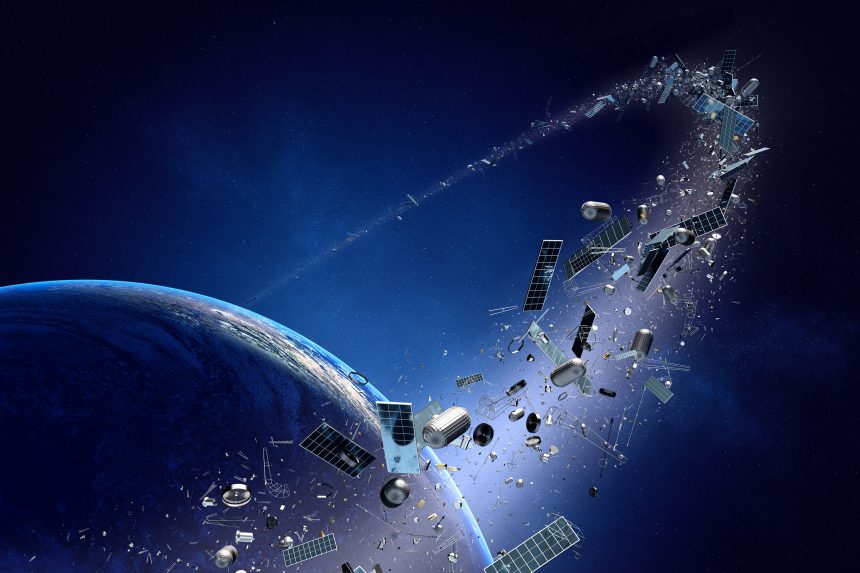The ever-expanding veil of inactive satellites and assorted space debris encircling our planet is increasingly casting a shadow over both existing and future space endeavors. This burgeoning swarm of inoperative artifacts, the legacy of more than fifty years of space exploration, signals a looming crisis for the continuity of space operations. As the volume of this celestial clutter escalates, so too does the specter of calamity, accentuating the critical need for adept management and remediation of space debris.
The Escalating Orbital Quandary
Earth’s orbit is currently besieged by a vast constellation of space debris, comprising defunct satellites, exhausted rocket segments, and shards from previous satellite collisions. The European Space Agency (ESA) reports a staggering count of approximately 34,000 objects exceeding 10 cm, alongside 900,000 pieces between 1 and 10 cm, and a colossal 128 million fragments within the 1 mm to 1 cm range.
The peril these remnants pose is far from hypothetical. Even diminutive debris particles, hurtling through low Earth orbit at speeds surpassing 17,500 mph, possess the potential to wreak havoc on operational satellites and manned spacecraft, such as the International Space Station (ISS). The notorious collision of 2009 between Iridium 33 and the defunct Cosmos 2251 satellite, which spawned a multitude of new debris fragments, vividly illustrated the domino effect of collisions, known as the Kessler Syndrome, which threatens to render vital orbits inoperative and imperil subsequent space missions.
Repercussions on Space Operations
The mounting collision hazard necessitates increasingly intricate and fuel-intensive maneuvers by active satellites and spacecraft to dodge debris, diminishing their operational lifespan and inflating mission expenditures. Moreover, the looming threat of debris strikes complicates the planning and execution of both manned and unmanned space ventures, amplifying the risks to astronaut safety and mission integrity.
Collective Mitigation Endeavors
In response to the dire space debris dilemma, global space agencies and consortia are rallying to devise and implement countermeasures. Strategies endorsed by entities like the Inter-Agency Space Debris Coordination Committee (IADC) advocate for measures such as the passivation of defunct satellites to avert explosions, ensuring the controlled deorbiting of satellites post-mission, and engineering spacecraft resilient to minor debris impacts.
Innovative approaches for the active removal of debris (ADR) are under exploration, ranging from robotic arms and capture nets to harpoons and directed energy solutions, all aimed at retrieving or reorienting sizeable debris objects to ensure their safe descent from orbit. Furthermore, the advent of satellite servicing vehicles promises to prolong the service life of active satellites, thereby curtailing the need for new satellites and, by extension, the generation of additional debris.
The Path Forward
The challenge posed by the accumulation of defunct satellite debris in space is formidable, threatening the very foundation of space exploration and utilization. The looming risk of disaster underscores the imperative for a unified international strategy, encompassing enhanced satellite designs, adherence to debris mitigation protocols, and the advancement of debris removal technologies. Only through concerted global efforts can we safeguard the operational sanctity and accessibility of Earth’s orbital domains for generations to come.








